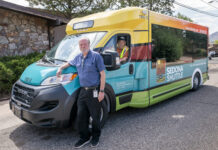With the 2016 election season in full swing, those vying for seats on the Sedona City Council were asked a variety of questions pertaining to issues facing the city — both today and in the future.
Q: What made you decide to run for city council?
When I ran for City Council four years ago, I had several objectives that I wanted to accomplish. Of course, I had no government experience and I had no concept how long an idea would take to accomplish. My first priority was fiscal sustainability. I was able to bring to the forefront that we are spending more than we are bringing in revenue. Expenditure control and new sources of revenue I hope to accomplish in these next four years.
Traffic was a second concern, and the city has begun a serious study into this issue. Parson Brinckerhoff performed the last full Sedona area transportation analysis in 1991.
My third concern was drainage and storm drain flooding. We are allocating resources to address this issue.
As you can see, we have begun to address these concerns and I want to see that these issues are resolved. We live in the most beautiful place in the United States, and I live by the code presented in the city’s Vision Statement: “To be a city that is constantly vigilant over the preservation of its natural beauty, scenic vistas, pristine environment and cultural heritage. To be a city that is animated by the arts and to be a city that lives up to the challenge of proper stewardship of one of the earth’s great treasures.” Tough decisions must be made to see the success of Sedona and my record of accomplishment demonstrates that I can make those decisions. I proved it when I became the first sitting councilor to vote “no” against the city budget.
Q: What specific ideas do you have to address the traffic issue?
We have contracted with an outside consultant to provide recommendations, using the latest technology and real-time data to address the city’s concern. Without this study, requests for grant funding from federal, state and county governments will not be accepted.
We have proposed to Arizona Department of Transportation that signs at Interstate 17, exit 287, diverting traffic from State Route 179, be installed upon completion of the widening of State Route 260. Increase the number of days the Community Service Aides are in Uptown, especially during peak weekends and holidays. I support the Sedona Lodging Council’s initiative to promote “Walk Sedona.” Most of the hotels are giving their guests rack cards to experience Sedona by walking instead of driving their cars.
This issue will also require coordination and cooperation with various agencies including county, U.S. Forest Service, and local municipalities. The chamber of commerce is an active participant by allocating significant funds from its product development account to support implementation of traffic-reducing programs.
This time the recommendations from the Sedona area transportation study will be implemented.
Q: Often, the vocal minority is the loudest voice when it comes to a topic in the city. How do you balance not only their concerns but the remaining majority of the community as well?
I have always been a major proponent of open forums with the public and all council members. Some have been well received, some not so. Nevertheless, I will always advocate to maintain this avenue to meet all members of our community.
As council members we must always remember that sometimes the best decision is not the most popular.
Since the day I was seated on council, I have always maintained an open-door policy. I have spoken with many citizens on the phone and have met them over coffee at several of our fine coffee houses.
Q: What do you see as the top issues facing Sedona these days and why?
As stated in the questions above, I believe that the main issues for the next four years and beyond are fiscal responsibility, environmental sustainability, traffic and the ability to manage growth. New concerns that come before council during my tenure or those after me can always be addressed using best practices that other cities, towns and counties have implemented to address these challenges. Rarely has a city been faced with a crisis that another city has not already addressed.
Q: The city owns 200 acres across from the wastewater treatment plant on State Route 89A. How would you like to see that land used?
Personally, I hope it always remains open with no buildings on this unspoiled area. To quote the city’s vision statement: “To be a city that is constantly vigilant over the preservation of its natural beauty, scenic vistas, pristine environment and to be a city that lives up to the challenge of proper stewardship of one of the earth’s great treasures.”
Remember that this area may be owned by the city, but it falls under the jurisdiction of Yavapai County. Any tax money generated will not be coming to the city.



















